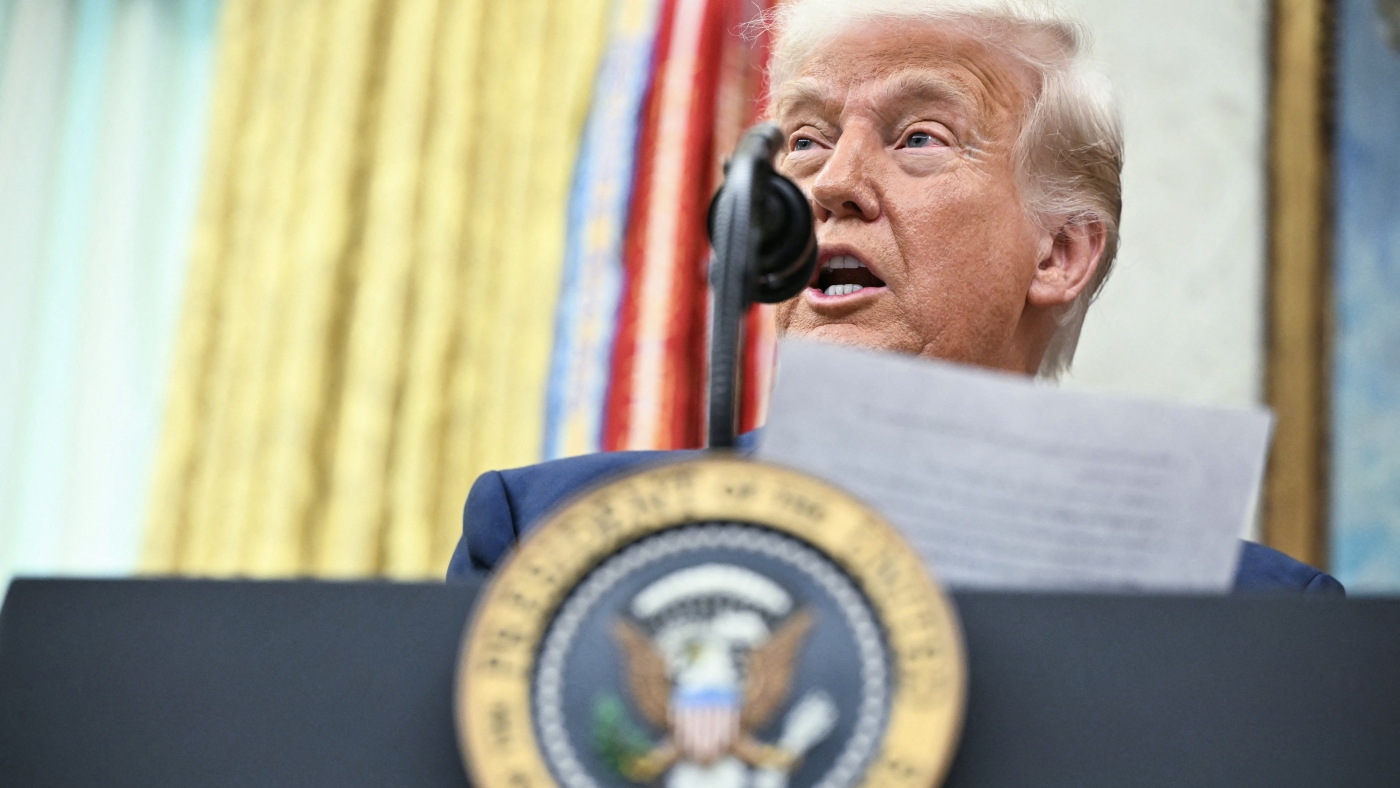Tax Season and the Making of the American Fiscal State
As Americans file their taxes this tax season, the Trump administration threatens to unravel the modern fiscal state.


Congratulations, America! Your taxes are filed, or at least your extensions have been requested. But Americans filed taxes this week in the midst of an unprecedented upheaval of the nation’s fiscal system which was inaugurated a century ago. Headlines blare about President Donald Trump terminating or pushing out tens of thousands of IRS employees. Meanwhile the Department of Government Efficiency (DOGE) is attempting to scale back the Justice Department’s Tax Division. Plus, the White House has called for the U.S. to use tariffs to replace the income tax. Taken together, these recent actions are combining to push for dramatic reversal of the decades-long process that built the American fiscal state a century ago. [time-brightcove not-tgx=”true”]
Tax laws and fiscal policies are the lifeblood of the modern state. They provide the federal government with the collective capacity to accomplish vital aims—from supporting retirees and subsidizing care for the disabled and the poor to protecting communities from crime and from foreign adversaries. Over a century ago, Americans advocated for an income tax to reallocate the financial burdens of funding a modern nation-state—one that would grow over time to provide badly needed public goods and services.
For much of the 19th century, the United States lacked the institutional capacity to mount ambitious federal programs. Regressive tariffs and excise taxes on alcohol and tobacco were the main sources of federal revenue. Those revenues supported limited federal spending—on average only about 3% of gross domestic product compared to 23% today—for a few grudging investments in infrastructure. So-called “internal improvements” were mostly the domain of state governments. And with the exception of the Civil War, the military was tiny by comparison to those of the European powers.
Read More: Paying Your Taxes Used to Be Patriotic
In those early years, the tariff was not intended to raise significant revenue. It was principally meant to protect the country’s “infant industries” from foreign competition. Success in that endeavor meant, by definition, that tariffs would generate little revenue. Goods kept out of the U.S. market never generated duty payments at U.S. ports.
Moreover, American protectionism soon began to diverge from its aims. Lawmakers increasingly used the protective tariff to pick winners in the marketplace, deciding which firms and which regions would benefit from duties placed on foreign rivals. The duty list became a tool for corruption and party self-dealing, a device for rewarding favorites and punishing enemies.
The protective tariff also facilitated corporate consolidations. Vast holding companies arose at the end of the 19th century, shielded from foreign competition and run by industrialists who boasted previously unknown riches. Because import duties raised the prices of everyday goods while protecting the industrialist class, ordinary Americans rightly came to associate the tariff with rising inequality and with the gross concentrations of wealth that typified the first Gilded Age—and now plague our own.
And so, a combination of agricultural interests, organized labor, and Progressive Era intellectuals demanded a new system of taxation to rein-in galloping inequality and support an expanded federal budget. Such pressure worked. Congress adopted its first peacetime income tax in 1894. When the U.S. Supreme Court struck it down a year later as unconstitutional, Americans responded by creating a social movement for what eventually, in 1913, became the 16th Amendment to the U.S. Constitution, authorizing Congress to lay and collect taxes on incomes. President Woodrow Wilson signed a new income tax into law later that same year, and the income tax has been with us ever since.
From the start, the income tax at the heart of the new modern fiscal state consisted of “progressive” or “graduated” rates. Tax rates at higher income levels were higher than tax rates at lower income levels. And thus, more affluent Americans paid not only proportionally more taxes, but progressively more than others of more modest means. By the mid-20th century, the income tax, along with a whole host of developments in law and in the economy, helped blunt the excessive 19th-century economic inequality.
But in the U.S., federal taxes were not intended to radically redistribute wealth from the rich to the poor. Rather, the aim of the new taxes was to eclipse the tariff and to establish a system of public financing adequate to meet the needs of a modern nation.
The new fiscal state sustained by the income tax created the financial foundation for twentieth-century American geopolitical power. U.S. fiscal capacity underwrote two successful world wars and a cold war nuclear arms race. It created the capacity for the host of public programs associated with the New Deal and Great Society. And it helped distribute more evenly the fruits of a post-World War II economic boom, reining-in the outsized wealth and influence of Roaring Twenties robber barons and contributing to the mid-century decades that witnessed the greatest equality of income and wealth in the past century of American capitalism.
Read More: The Tariff History Donald Trump Is Overlooking

Today, the achievements of the modern fiscal state hang in the balance. The tariff is back; the president says it is “the most wonderful word in the dictionary.” The Trump administration has levied a sweeping set of import duties against nearly all of our trading partners, including key allies in North America and Europe.
Rather than using the tariff to protect American industry, as it previously had done, Trump is now using it to launch an all-out war on the very state capacity that once made America great. Trump has called on lawmakers to extend and make permanent his 2017 tax cuts—a plan that could cost $4.5 trillion and balloon an already unsustainable level of public debt. Aides at Elon Musk’s DOGE have gutted the IRS in ways that insiders believe will cost around $500 billion dollars, or around 10% of the federal government’s annual tax revenue, and hopes to further access the sensitive personal information of American taxpayers. The rate of tax audits is expected to plummet. And Homeland Security head Kristi Noem plans to leverage IRS data to help ICE’s deportation efforts.
The modern fiscal state, with its taxation power, its legitimate coercive authority, and its sheer capacity, is arguably the only institution capable of countering the astonishing power of our billionaire robber baron oligarch class. It is no wonder, then, that the Trump White House has targeted its powers. Without it, we could return to a weaker, more unequal, and less democratic society.
Ajay K. Mehrotra is a professor of law & history at Northwestern University, a research professor at the American Bar Foundation, and author of Making the Modern American Fiscal State: Law, Politics, and the Rise of Progressive Taxation, 1877 – 1929.
John Fabian Witt is a professor of law & history at Yale. His next book, The Radical Fund: How a Band of Visionaries and a Million Dollars Upended America, will be published by Simon & Schuster in October.
Made by History takes readers beyond the headlines with articles written and edited by professional historians. Learn more about Made by History at TIME here. Opinions expressed do not necessarily reflect the views of TIME editors.











![How to Work With HAR Files: A Step-by-Step Guide [With Examples]](https://media2.dev.to/dynamic/image/width=800%2Cheight=%2Cfit=scale-down%2Cgravity=auto%2Cformat=auto/https%3A%2F%2Fdev-to-uploads.s3.amazonaws.com%2Fuploads%2Farticles%2F5wovh8gozs51ofbg0nks.png)






_Andreas_Prott_Alamy.jpg?width=1280&auto=webp&quality=80&disable=upscale#)



















































